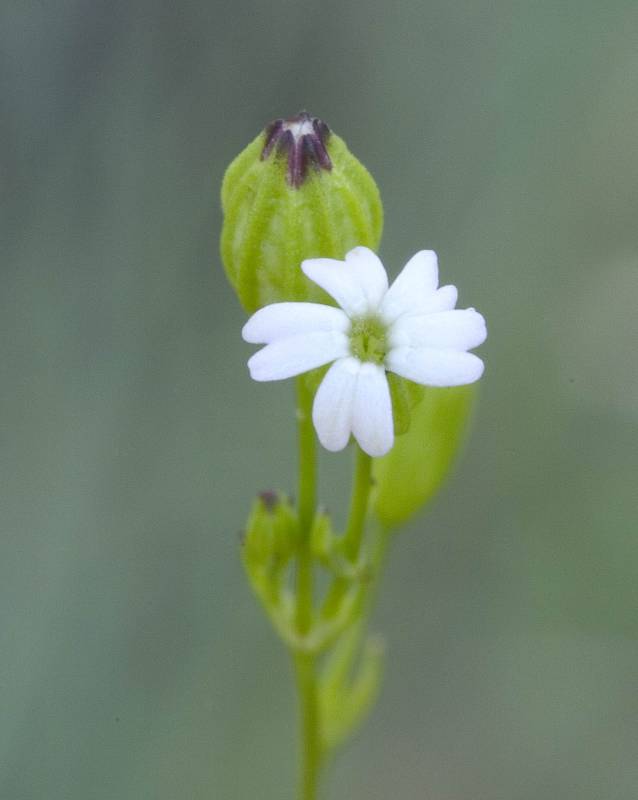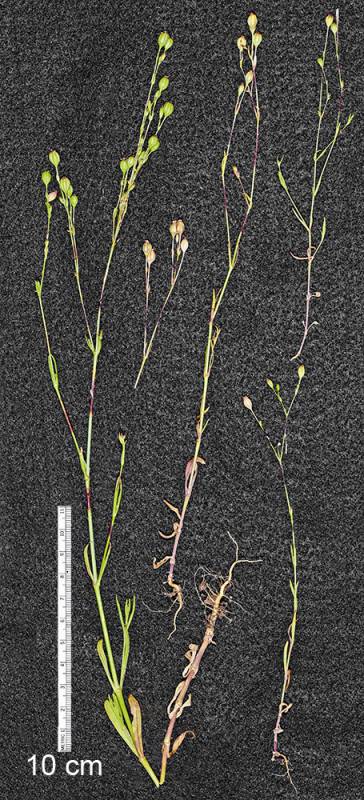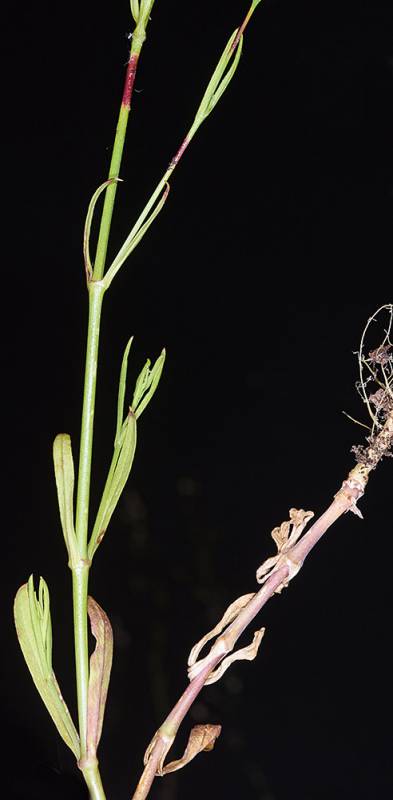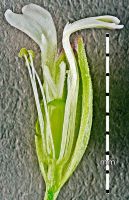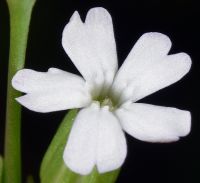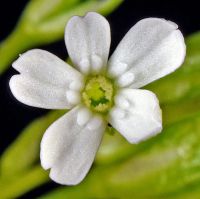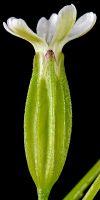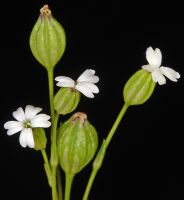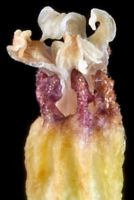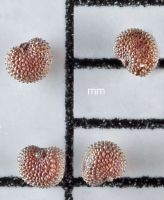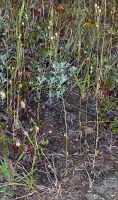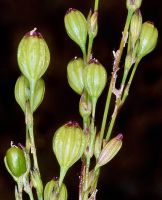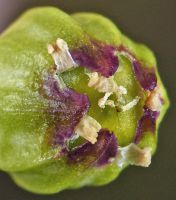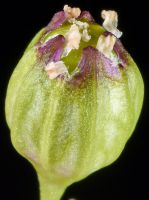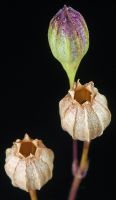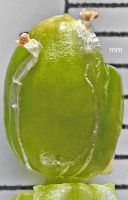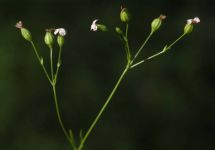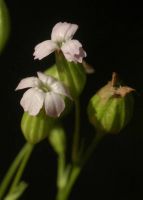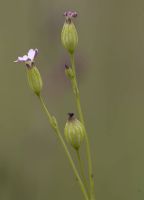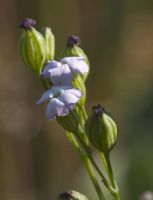Distribution: Occurring on both sides of the Cascades crest in Washington; British Columbia to California, east across North America to the Atlantic Coast.
Habitat: Open areas, often where disturbed.
Flowers: May-August
Origin: Native
Growth Duration: Annual
Conservation Status: Not of concern
Pollination: Self-pollination, moths, hummingbirds
Erect, simple to branched annual, 2-8 dm. tall, puberulent below and glabrous above, glandular in bands below the nodes.
Basal leaves oblanceolate, 3-6 cm. long and 2-15 mm. wide; cauline leaves several pairs, oblanceolate to linear.
Flowers few to many in a compact or open inflorescence; calyx 5-lobed, tubular, 4-10 mm. long, 10-nerved, glabrous; petals 5, white to pink, with a narrow claw 2-3 times as long as the obcordate blade; blade appendages two, 0.4 mm. long; stamens 10; styles 3.
Capsule 3-celled.
Publication: Sp. Pl. 1: 419. 1753.
PNW Herbaria: Specimen records of Silene antirrhina in the Consortium of Pacific Northwest Herbaria database
WA Flora Checklist: Silene antirrhina checklist entry
OregonFlora: Silene antirrhina information
E-Flora BC: Silene antirrhina atlas page
CalPhotos: Silene antirrhina photos

